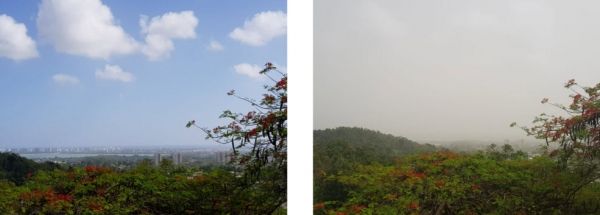NASA Earth-observing satellite data have shown that dust can ride air currents for 6,000 miles or more, affecting air quality that can be hazardous to human health. The project is led by NASA-funded researcher Pablo Méndez-Lázaro.
"Being able to see this dust before it arrives is a critical tool for public health," said Méndez-Lázaro, an associate professor at the University of Puerto Rico Medical Sciences Campus in San Juan. “We alerted federal and state agencies as well as medical doctors, which gave them time to alert the public and vulnerable populations like people with asthma. Before, decision-makers lacked the specific information to help the public protect themselves in advance."
Dust often travels across the Atlantic and is a natural fertilizer for plants and coral, but the dust, especially in large quantities, causes poor visibility and air quality. It affects human health by causing irritation of eyes, nose and throat and it often contains fine particulates of silica and other minerals that are of a size that can easily infiltrate and irritate lung tissue.
Continue reading at NASA
Image via NASA


